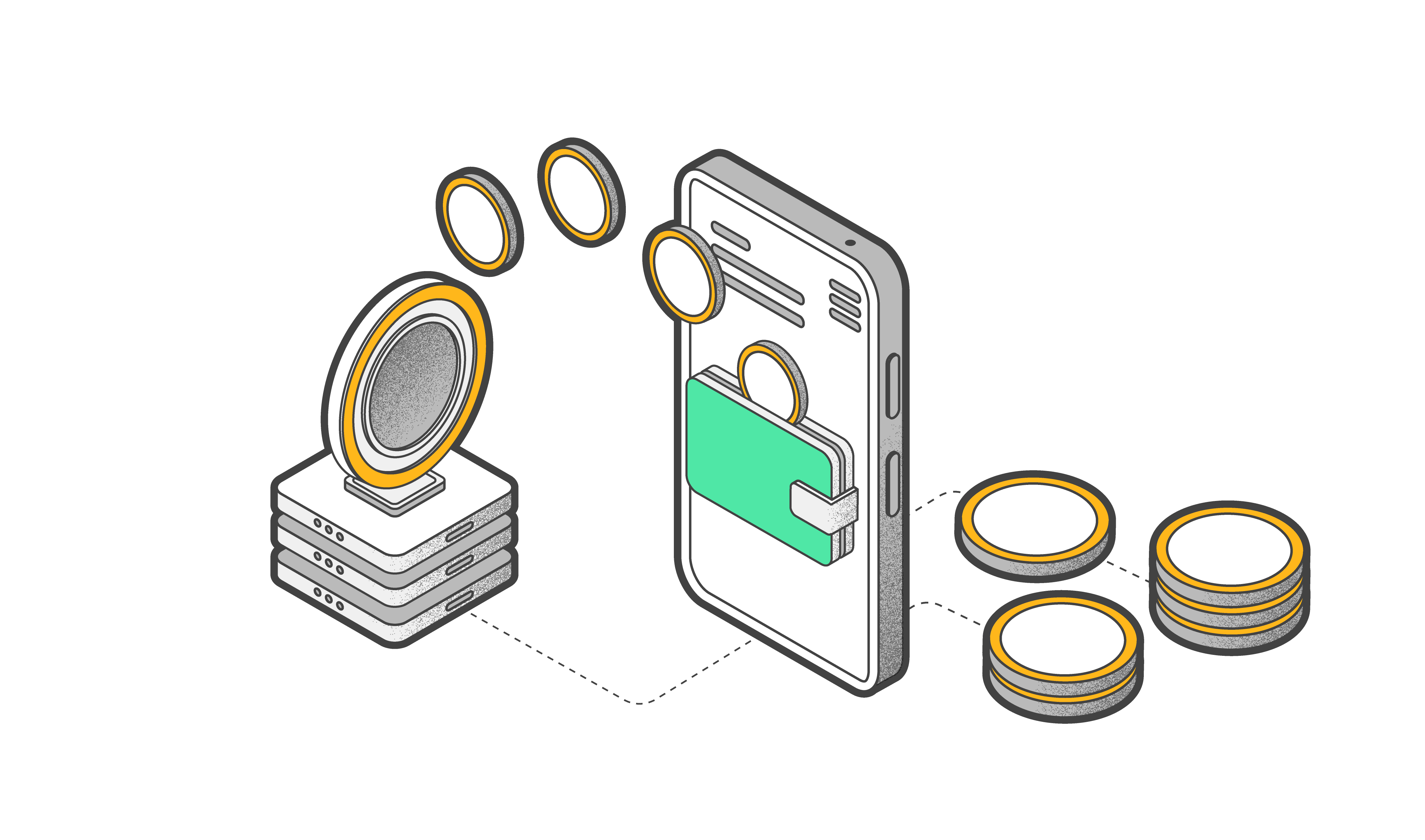Staking: what it is and how to make money from staking

Staking lets you earn passive income from cryptocurrencies using the Proof-of-Stake (PoS) system. This involves locking up a certain amount of coins in a wallet to help maintain the network and validate transactions. Compared to just keeping crypto in a wallet, staking is usually more profitable and works similarly to a bank deposit. The profits you can earn from staking vary by blockchain and can reach up to 10% or more than 100% per year.
What is Proof-of-Stake?
Proof-of-Stake (PoS) is a method used to validate transactions on a blockchain. In PoS, validators (computing nodes) have the right to create new blocks and confirm transactions based on the number of coins they hold. The more coins you have locked up, the more profit you can earn. Some blockchains also consider how long you’ve held your coins and other factors.
Staking is the process of earning rewards for helping the blockchain by locking up your coins. People participating in PoS networks can earn passive income either by becoming validators or by delegating their coins to a node operator.
A popular variant of PoS is Delegated-proof-of-Stake (DPoS). With DPoS, coin owners can stake their coins without needing to set up their own node or lock away a large sum of money. For example, to become an Ethereum validator, you need a significant amount of money (around $43k).
Instead, you can delegate your staking to a validator who already runs a successful node, allowing you to invest less money upfront.
Staking is generally a more affordable option for earning passive income compared to mining, which requires expensive hardware like high-end graphics cards. If you choose to delegate your coins to a staking provider, you may not need to invest much initially.
How to start making money from staking
Staking involves the following steps:
- 1. Buying crypto.
- 2. Depositing coins into a wallet, crypto exchange, or other staking platform.
- 3. Locking your crypto assets for staking.
- 4. Earning passive income.
What are the staking providers
Various crypto platforms allow you to stake through a staking provider's wallet. These include exchanges, special decentralized platforms (DeFi), and staking-enabled wallets. Staking providers aim to make the process of staking as easy as possible for crypto users and typically charge a small fee for it.

Where to stake crypto
- Centralized exchanges (CEX) include Binance, Coinbase, Kraken, ByBit, and others. Crypto exchanges serve as staking providers, allowing users to lock crypto assets in their accounts for a certain period in exchange for predefined percentage yields (fixed staking). They may also enable users to withdraw the locked crypto at any time (flexible staking), although this option is generally much less profitable.
DeFi staking involves DEX and specialized platforms for staking, such as Lido, Ankr, Marinade Finance, PancakeSwap, etc. This isn't precisely traditional staking, as you aren't working with a blockchain consensus algorithm, but rather with DeFi smart contracts.
When you send crypto to DeFi services for staking, your locked coins can be utilized to credit other market participants or to provide crypto liquidity (the locked coin/token set aside for a liquidity pool ensures it can be quickly bought or exchanged by other participants in the market). The security of your locked funds is guaranteed by a smart contract.- Cold wallets offer various options. To generate passive income, you can:
— Store crypto at a single address. If you transfer it, the blocking period will be interrupted, and the staking reward will be lost.
— Connect to one of the DeFi platforms using the Wallet Connect protocol and send coins for staking.
The main risks of staking
- Changes in the value of coins and tokens can lower your staking rewards, so it's best to avoid buying and staking crypto when prices are high.
- There are some hacking risks when staking your crypto on the platform, though they aren't major.
- High network fees or sudden spikes can be a worry. You'll incur fees when staking or redeeming crypto, so it's important to estimate these costs and weigh them against your staked amounts.
- Rising fees can cut into your profits and affect your return on investment (ROI), particularly if you're investing small amounts.
- Unreliable exchanges can be risky. In the cryptocurrency market, scam projects often promise high staking returns, so be careful with offers that seem too good to be true.
- While rare, smart contracts can fail.
Conclusion
Staking is a simple way to earn passive income, but it carries risks. The average annual return can be up to 11% or even higher. To protect your crypto assets, diversify your investments. Don't invest everything in one place; spread your money across different coins and tokens and use various platforms. This way, if some tokens lose value, gains in others can help maintain your overall income.
Tangem AG provides only hardware wallets and non-custodial software solutions for managing digital assets. Tangem is not regulated as a financial services provider or cryptocurrency exchange. Tangem does not hold, custody, or control users’ assets or transactions. Crypto transaction services are provided by third-party providers. Tangem provides no advice or recommendation on the use of these third-party services.
Staking and yield generation services are provided by third-party blockchain protocols and decentralized finance (DeFi) platforms. Tangem provides non-custodial access only. Earnings from staking are not guaranteed, may fluctuate significantly, and depend entirely on network or protocol conditions. Users participate at their own risk.
